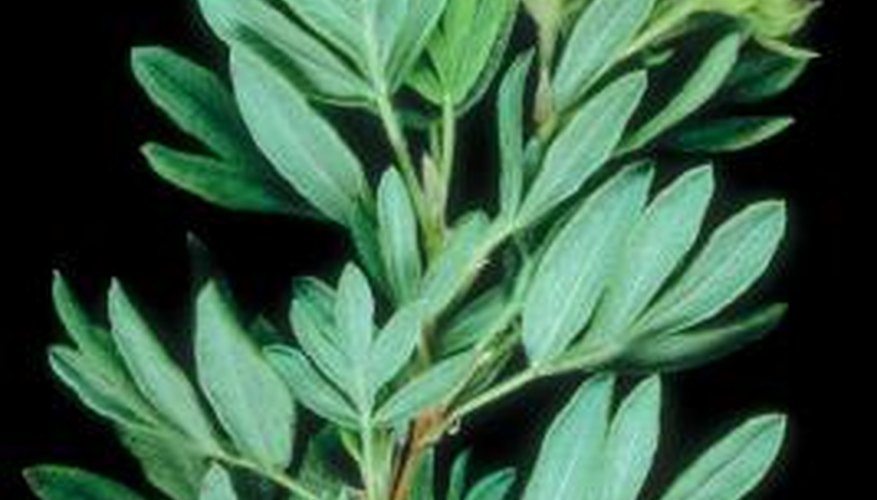Potentillas, or cinquefoil, are a diverse group of plants that are evergreen to deciduous and include low ground covers to large shrubs. With wide variations in appearance, they range from low strawberrylike ground covers to shrubs as tall as 5 feet. Some have fuzzy leaves; some have glossy leaves. Flowers range in colour from light yellow to dark pink. Of the evergreen varieties, some are perpetually evergreen and some are evergreen only in warmer climates. Evergreen types are less common in garden centres and catalogues than their deciduous counterparts, but they can serve important functions in a landscape and deserve more attention.
Yellow-Flowered Varieties
Yellow, or variations of yellow, is the most common colour found in potentilla. Some varieties stand out for being a little different, though. Potentilla aurea is a low mounding plant with single flowers similar to buttercups. Its foliage is deep green, and it needs adequate drainage. Potentilla reptans "Pleniflora" was introduced by the Royal Botanical Gardens, and has beautiful bright yellow double flowers. At 4 inches tall, they make excellent ground covers or rock garden plants.
- Yellow, or variations of yellow, is the most common colour found in potentilla.
- At 4 inches tall, they make excellent ground covers or rock garden plants.
White- or Pink-Flowered Varieties
Some of the less common colours of potentilla are white and pink. Potentilla tridentata has leaves a bit thinner than but similar to strawberry leaves, and it has a single white flower. The variety "Nuuk" is a particularly cold hardy variety. Both have a low mat forming habit, and are deer resistant. Potentilla nepalensis has single pink flowers, as do many of the named varieties like "Miss Willmott," "Ron McBeath" and "Melton Fire." They vary in the intensity of pink. These are more shrublike, and at 12 inches they make high ground covers or decorative shrubs.
- Some of the less common colours of potentilla are white and pink.
- Potentilla tridentata has leaves a bit thinner than but similar to strawberry leaves, and it has a single white flower.
Orange-Flowered Varieties
Orange is not a common colour for potentillas, but they are gaining ground as more and more are becoming available. Potentilla x tonguei is one evergreen variety having apricot orange flowers with red centres. They have a creeping habit that makes them good for ground covers. They have a long bloom time and are deer resistant. They can tolerate hot, dry locations, so this makes them great for some of those difficult areas that get summer heat.
- Orange is not a common colour for potentillas, but they are gaining ground as more and more are becoming available.
- They have a creeping habit that makes them good for ground covers.
Strawberrylike Potentilla
Strawberries and potentillas are close relatives and can even cross breed. Therefore, it is no surprise that some potentilla are a lot like strawberries in appearance. Potentilla cranztii "Pygmea," for example, has leaves that look like small strawberry leaves, is 3 inches tall and has yellow flowers. Potentilla neumanniana and P. neumanniana "Nana" are very similar to "Pygmea," with "Nana" being the smallest of the three. Potentilla indica actually has small, red, edible fruit similar to a strawberry. All are mat forming and great for low borders, between flagstone steps or even as lawn replacements.
- Strawberries and potentillas are close relatives and can even cross breed.
- Potentilla cranztii "Pygmea," for example, has leaves that look like small strawberry leaves, is 3 inches tall and has yellow flowers.
Silvery Leaves
While several silvery-leaved potentillas exist, most are not readily available to the home gardener. Potentilla anserine (Argentina anserine) is a native to temperate North American climates and is available through several seed sources. It has silvery foliage, yellow strawberrylike flowers and it likes moist soils. It can tolerate areas with poor drainage and seasonal flooding. It's great for those difficult low, wet areas in a landscape.
- While several silvery-leaved potentillas exist, most are not readily available to the home gardener.
